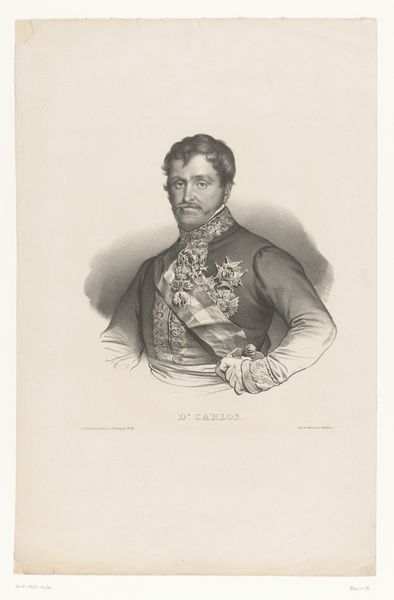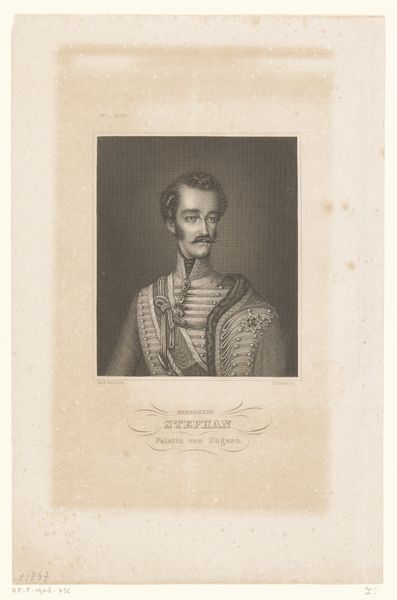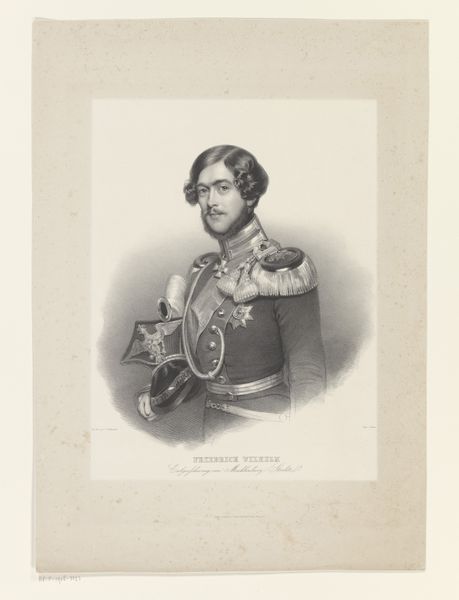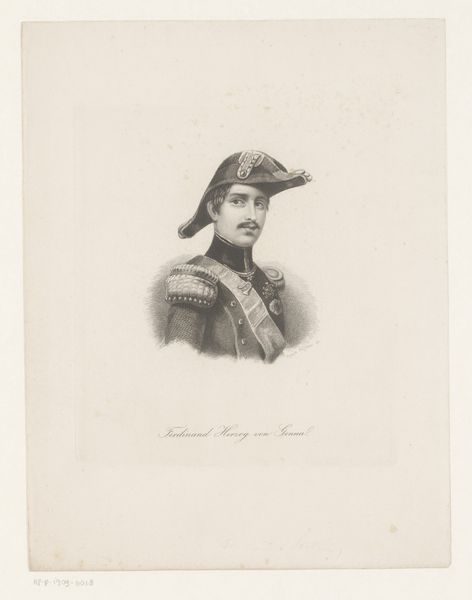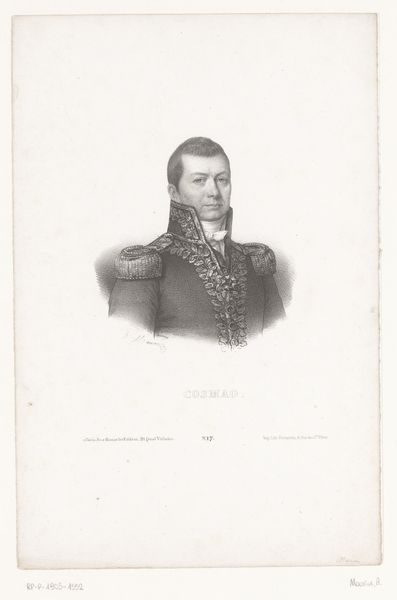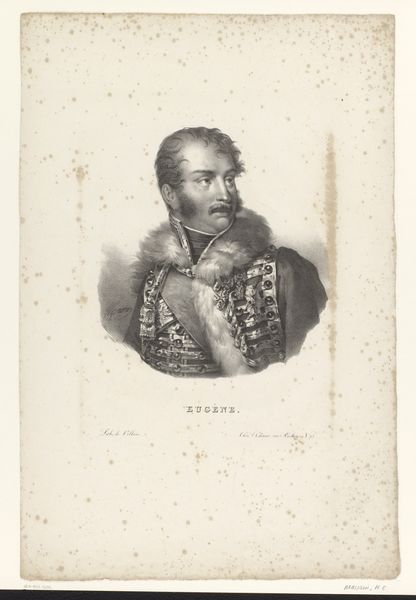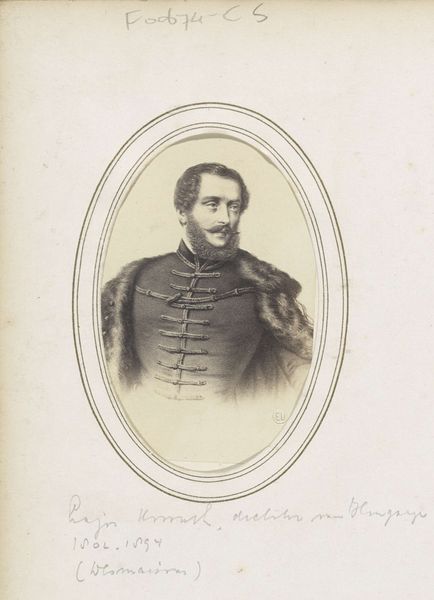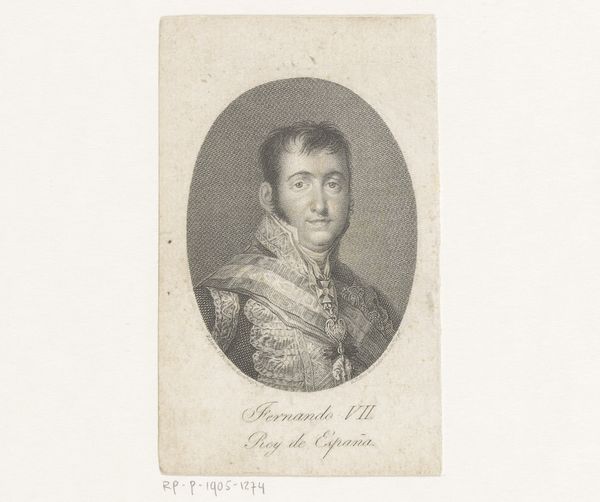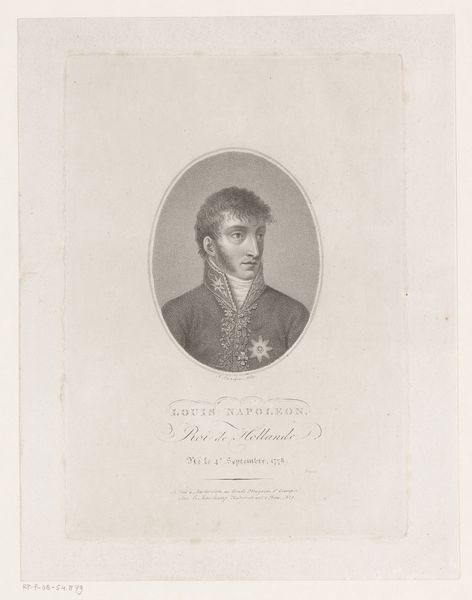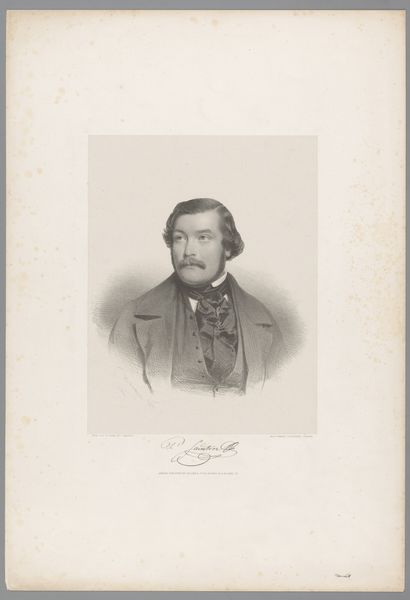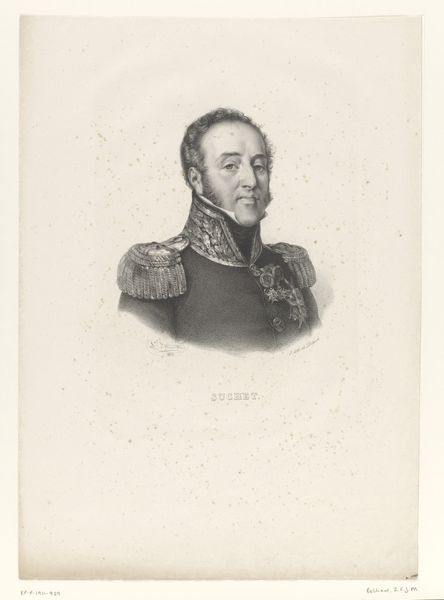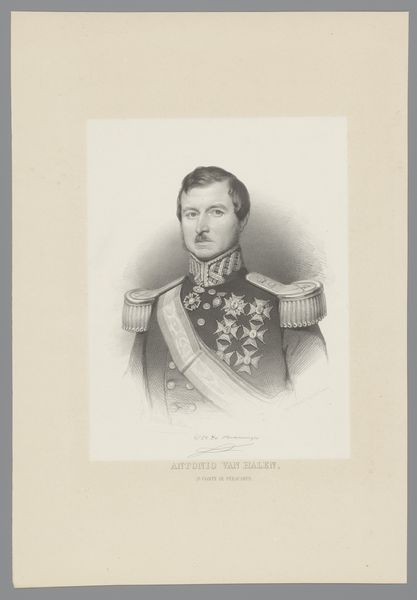
print, engraving
#
portrait
# print
#
old engraving style
#
historical photography
#
19th century
#
academic-art
#
engraving
#
realism
Dimensions: height 245 mm, width 163 mm
Copyright: Rijks Museum: Open Domain
Curator: This is "Portret van Cornelius Anthonius Geisweit van der Netten," an engraving from the period 1822 to 1845. Editor: It strikes me as very formal and serious, almost austere despite the gentleman's fashionable fur collar and decorative medals. Curator: Indeed, engraving was a popular medium for disseminating portraits in the 19th century, providing relatively affordable access to imagery of prominent figures. Note the precise lines achieved through the printmaking process, quite labor intensive. The layering to create the tonal gradations is really masterful. Editor: You are right. The precision speaks to its cultural function, memorializing status and achievement. But, beyond just the lines, how the elite were seen mattered greatly, and the almost mass-produced nature of an engraving changed how imagery of public figures circulated and reinforced hierarchies in society. How was this image meant to function publicly? Curator: Good question. One thing to observe is the deliberate craftsmanship. We see high art adopting techniques with origins in craft and the trades, raising questions about distinctions that privilege painting and sculpture above reproducible image-making. Editor: And by including this image in a gallery, what are we doing? Who was this gentleman, Cornelius? Is he just a name or an embodiment of power relations? That fur collar smacks of wealth, privilege, even power during an era of rapid societal change in Europe. Was he aligned to nobility? What narratives are supported by circulating his image? Curator: Historical context is key. To understand Geisweit van der Netten, we must look at his position within the social fabric of his time, but also the technology used to propagate it and how access determined perception. It's also crucial to look at who was excluded, whose portraits weren't made or weren't preserved. Editor: Precisely. I am struck by how a single portrait brings forward conversations on technology, representation, and societal dynamics during a critical period. Curator: A tangible reminder of history rendered materially and publicly accessible.
Comments
No comments
Be the first to comment and join the conversation on the ultimate creative platform.
